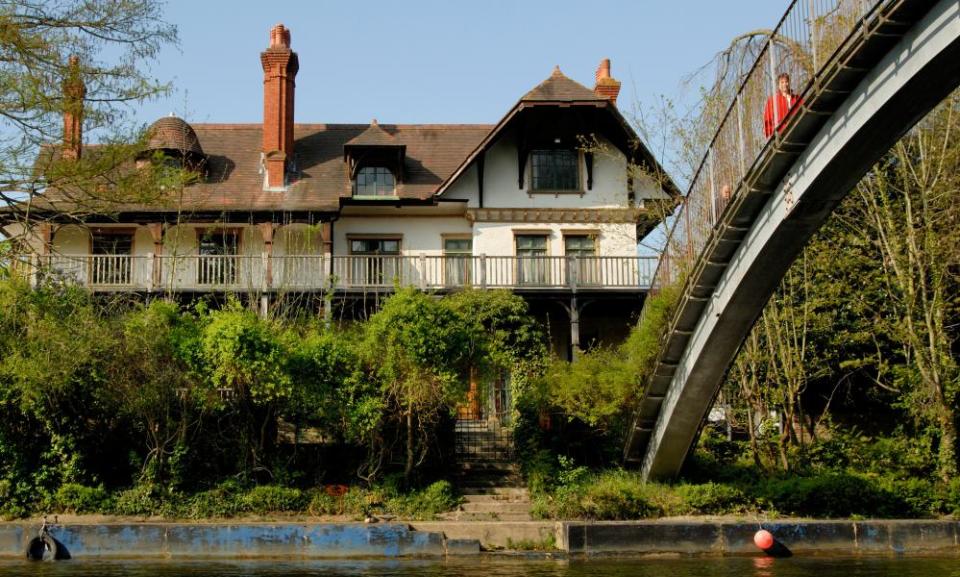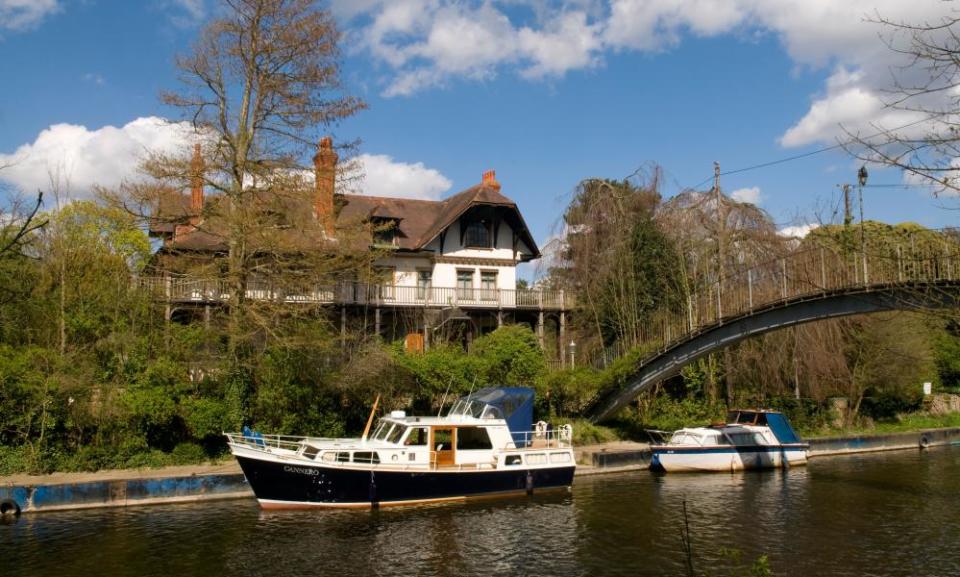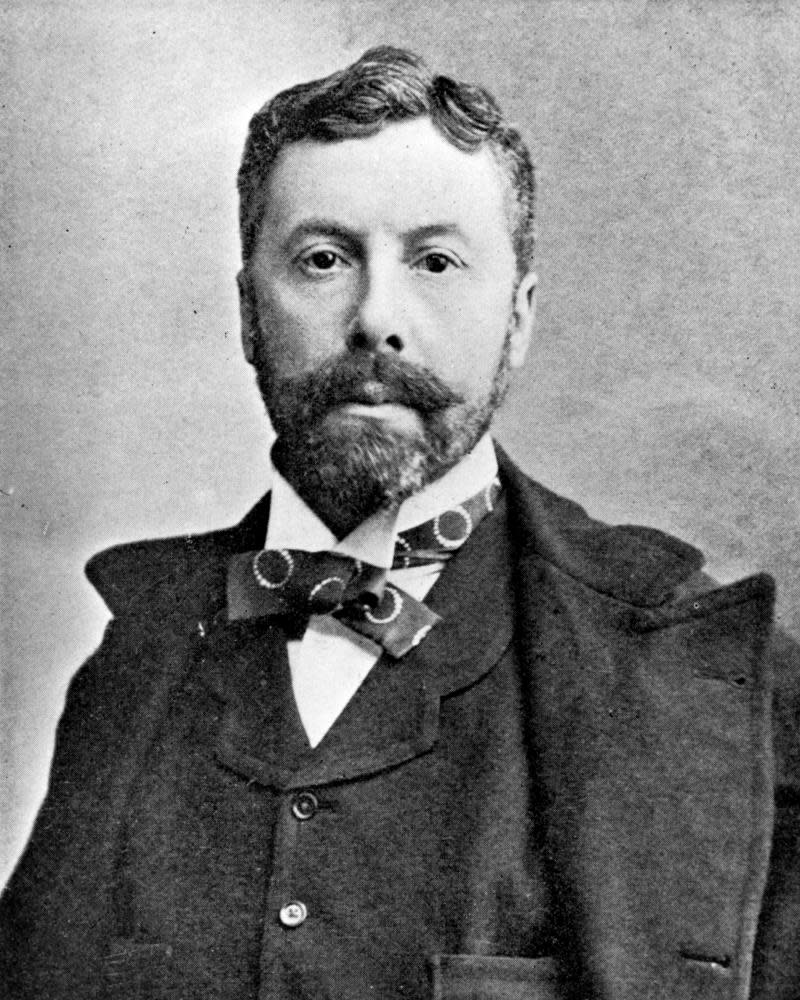D’Oyly Carte Island, complete with crumbling mansion, sold for £3m

A 13-bedroom Victorian mansion perched on a private island in the River Thames that was built for Gilbert and Sullivan opera impresario Richard D’Oyly Carte has been sold to a mystery British buyer for just over £3m.
D’Oyly Carte Island, which was known as Folly Eyot until D’Oyly Carte bought it in 1890, has long intrigued local residents fascinated by the abandoned Grade II-listed mansion which is only accessible by a narrow footbridge from the south bank of the Thames near Weybridge. Until the footbridge was installed in 1964, the only way to access the island was to pull oneself across on a chain ferry.
The mansion and island, which have laid abandoned for at least a decade, was sold this week to a mystery British buyer who has pledged to invest more than £1m on top of the sale price to “bring it back to stand as the glory on the Thames that D’Oyly Carte would be proud of”.
The new owner, who declined to be named, said they had often passed by and were intrigued by its backstory and excited to live their dream life on the island.

According to filings at Companies House the mansion, named Eyot House, was previously owned by Chinese businessman Chunlei Mi. He is said to be married to well-known Chinese TV presenter Dong Qing.
Ricky Luther, director of Chase Apartments, the estate agent who sold the house, said it appeared the previous owners who bought the house in 2019 had not lived in the property and parts of it had fallen into a near-derelict state.
“It does need a lot of work doing to it,” Luther said. “It’s going to be quite an expensive project for the new owner and they have committed to doing it up to its former glory.”
Luther said the island has intrigued local residents for some years, and many people inquired about viewings. “It is very well known in the area, and a lot of people had interesting ideas for it, from turning it into a hotel or a yoga retreat.” He declined to identify the new owners but said they were a local couple.
When D’Oyly Carte, who owned the five-star Savoy hotel on the Strand, bought the island it was not much more than large mud bank in the Thames. He put a team to work to enlarge and strengthen its shore against the tides and gave it a shape resembling an ocean liner.
Next, he went to work creating plans for a “Savoy-on-Thames” hotel on the 1.9 acre (0.78 hectares) site which would have a dedicated boat service to ferry guests from the central London hotel.

However, D’Oyly Carte, who convinced dramatist WS Gilbert and composer Arthur Sullivan to collaborate on their first comic opera in 1875, could not persuade the authorities to grant him a liquor licence and his second hotel dreams were dashed. Instead, D’Oyly, who has been described as “the Simon Cowell of Victorian England” and his wife, Helen, used Eyot House as one of their main residences.
Gilbert and Sullivan are said to have spent many happy weekends there rehearsing with the Savoy Opera Company, to the delight of the Weybridge residents who would gather on the mainland to enjoy the music. The pair are responsible for a host of well-known operas still performed today, including The Mikado, HMS Pinafore and The Pirates of Penzance.
Along with its 13 bedrooms, the house boasts five bathrooms, four reception rooms and a grand ballroom. It comes complete with the island and chunk of land on the mainland with parking for more than 20 cars and a marina.
D’Oyly Carte, who died in 1901, commissioned craftsmen to introduce fairytale elements to the facade of the house including gargoyle and crocodile carvings in the eaves. The island’s gardens are said to have been designed by a landscape architect tasked with recreating a feeling of the Japanese-themed Mikado. Trees used in the design were planted by experts from Kew Gardens more than 100 years ago.

 Yahoo Movies
Yahoo Movies 